By Dan Weisz
After a pre-Thanksgiving trip to see grandkids in Las Vegas, we stopped at Hemenway Park in Boulder City on the way back to Tucson in hopes of seeing the local Bighorn herd. Our wish was granted.
A few males were dining on desert broom, the same desert broom plant we have throughout the Foothills. One stopped and gave me a look.
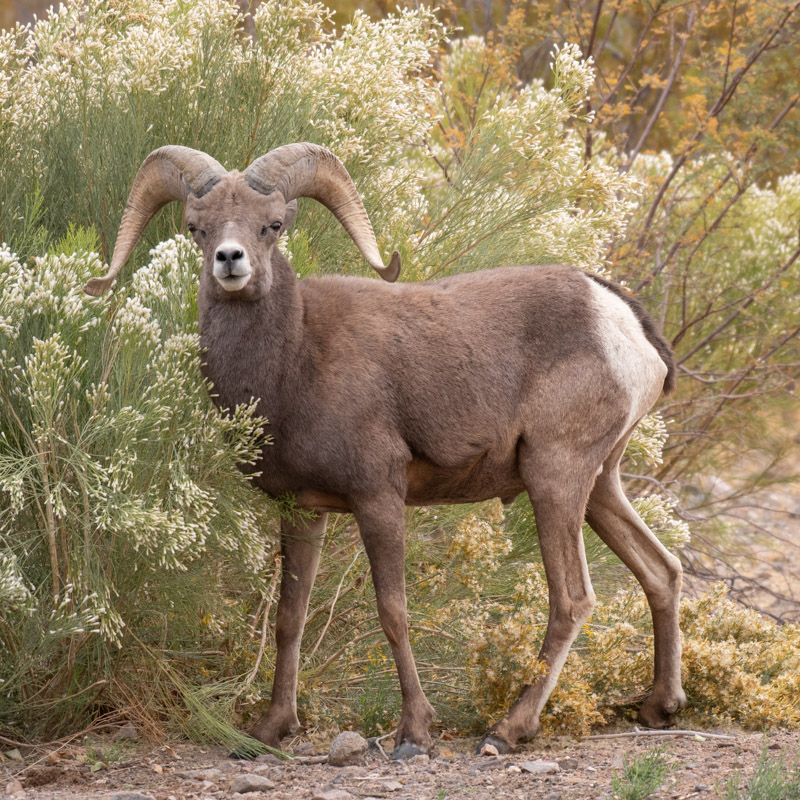
Portrait of a large Ram: Although I’ve now seen sheep from this herd a few times now, I was struck by how dark the rams looked that morning. I believe these sheep are from the Rocky Mountain Bighorn subspecies rather than the Desert Bighorn that we have in southern Arizona.
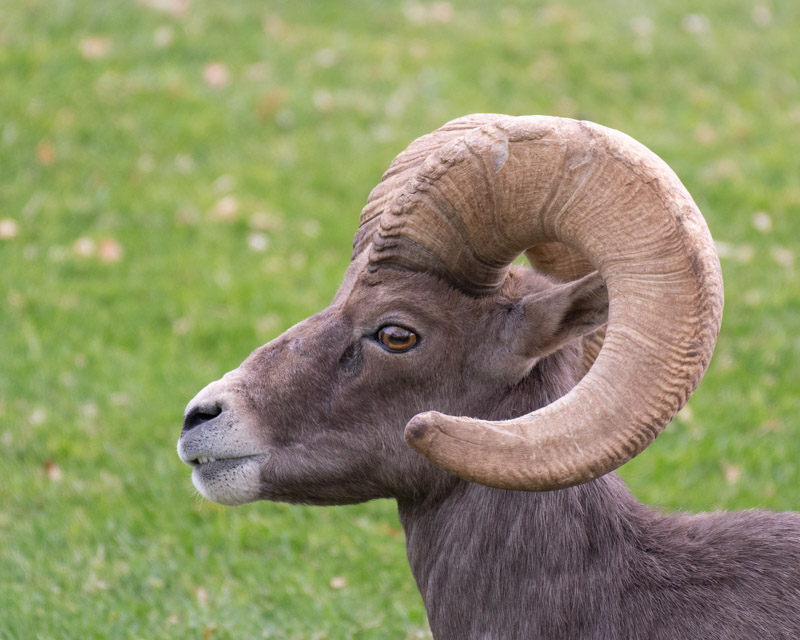
This sheep walked by the desert broom and then struck a pose that I thought looked both alert and strong. He paused for a few seconds.
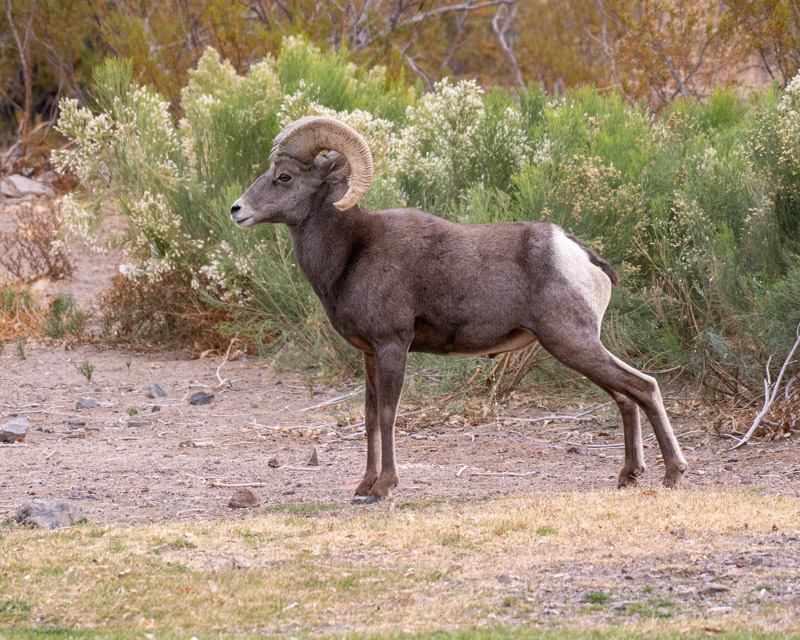
It wasn’t until I began processing my photos that I realized what his stance meant. He just wanted to stay dry while doing his business.
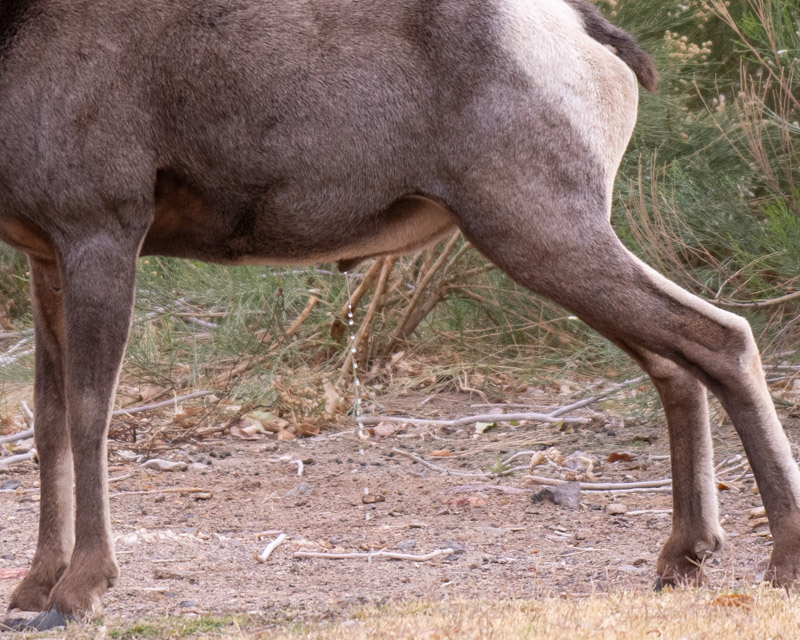
One young male approached a larger male and then hooked his horn under the larger, more dominant male and rubbed his face against the side of the larger male. They circled around each other in this position once. I believe this is done to show that the younger male understands he is submissive and knows his rank in the pecking order so that the older male will not feel threatened by him.
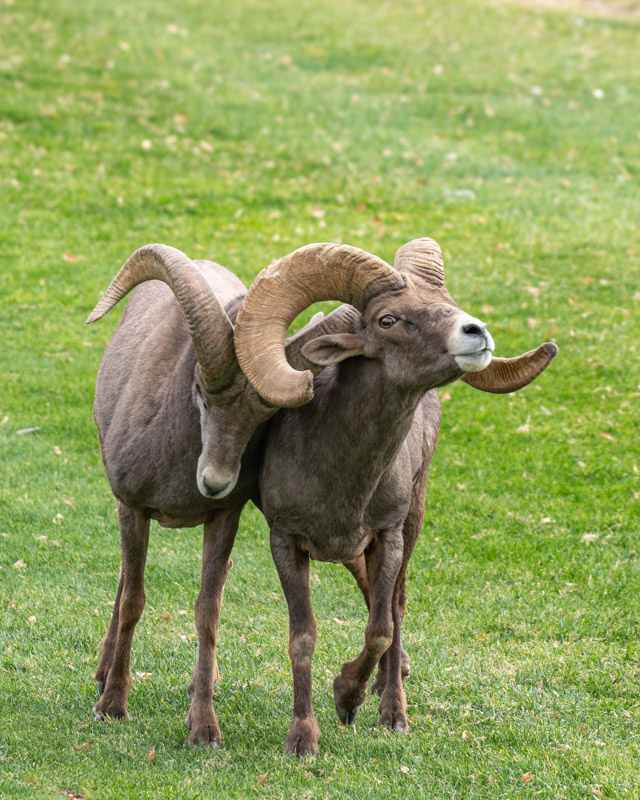
As the two males finished their “circle” they separated and slowly each went their own way.
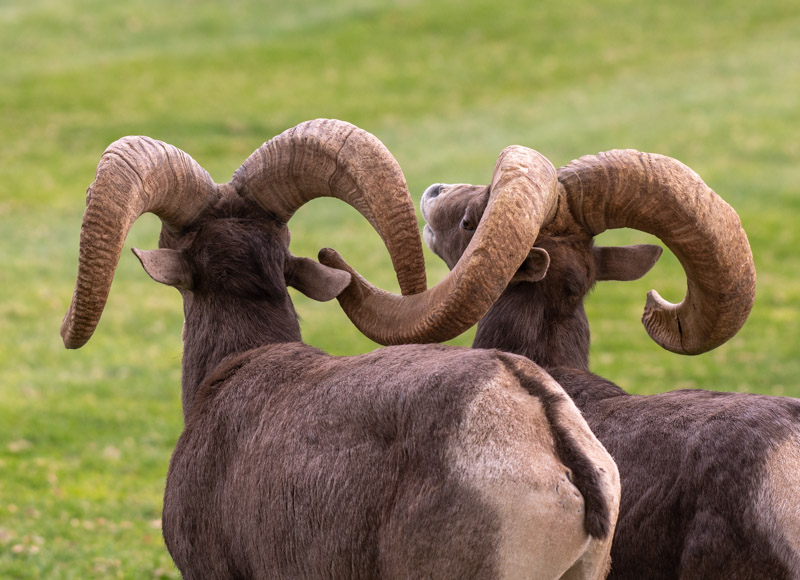
The preorbital gland is very apparent in this photo. Seen right in front of the sheep’s eye, this is a scent gland that produces pheromone-containing secretions to mark territory and for use in breeding.
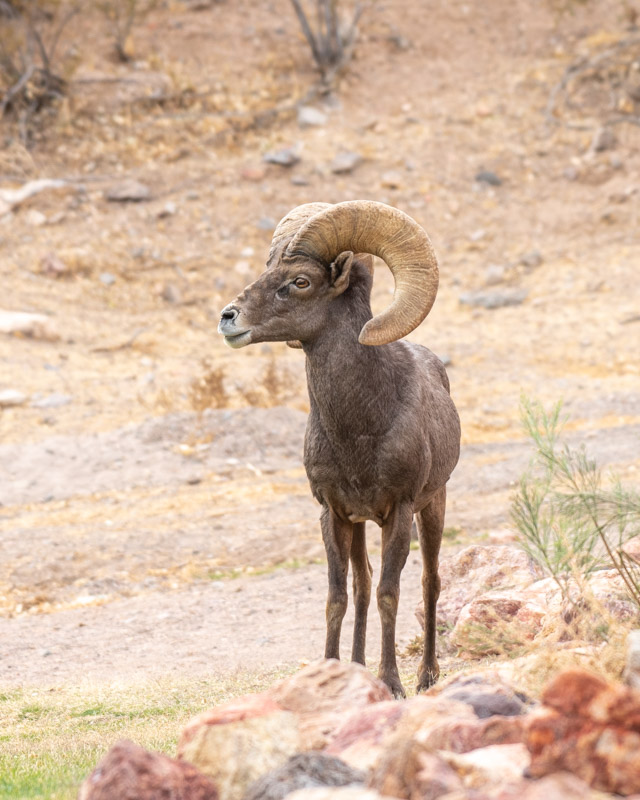
A ewe looks back at other members of the herd, perhaps at one of the males in the photos above. The female Bighorn Sheep has much smaller, thinner horns compared to the male’s massive curled horns.

A number of sheep remained on the hillside adjacent to the park. Bighorn Sheep are dramatically handsome mammals.
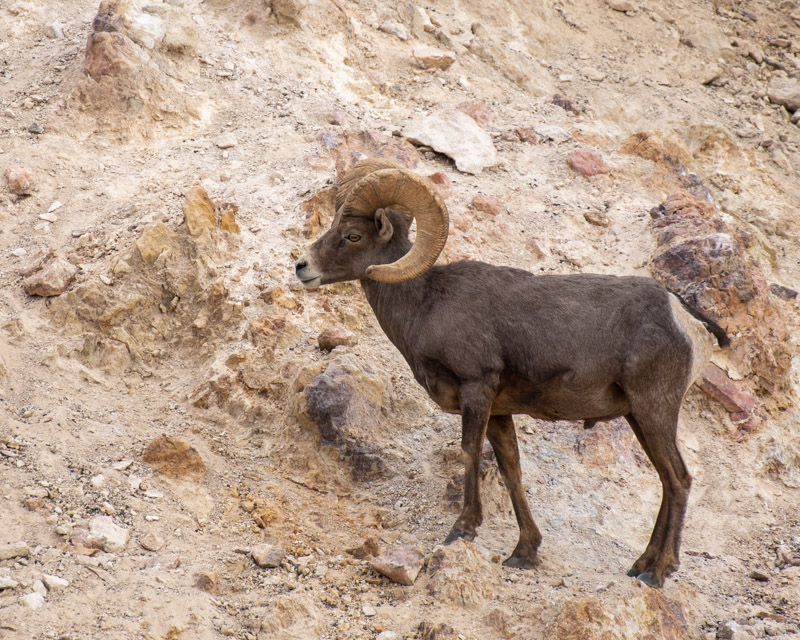
This ram was walking up the hill towards another ram and then it stopped and rubbed its head on a thin bush. He was scent marking by rubbing his preorbital gland on the bush. Whether he was marking territory or taking out some aggression on the plant rather than on the male above him on the hillside, I am not sure. He ended up keeping his distance from the other ram.
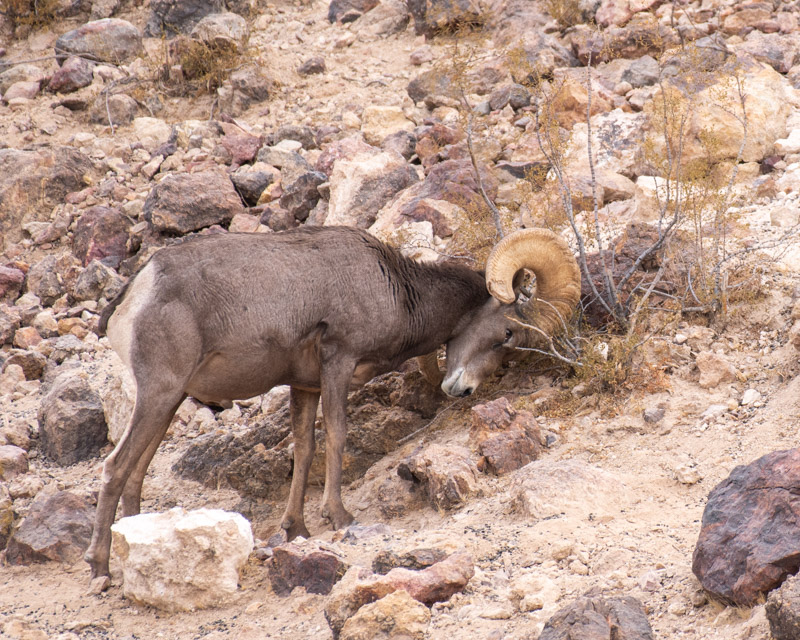
Two rams were near the top of the hill.
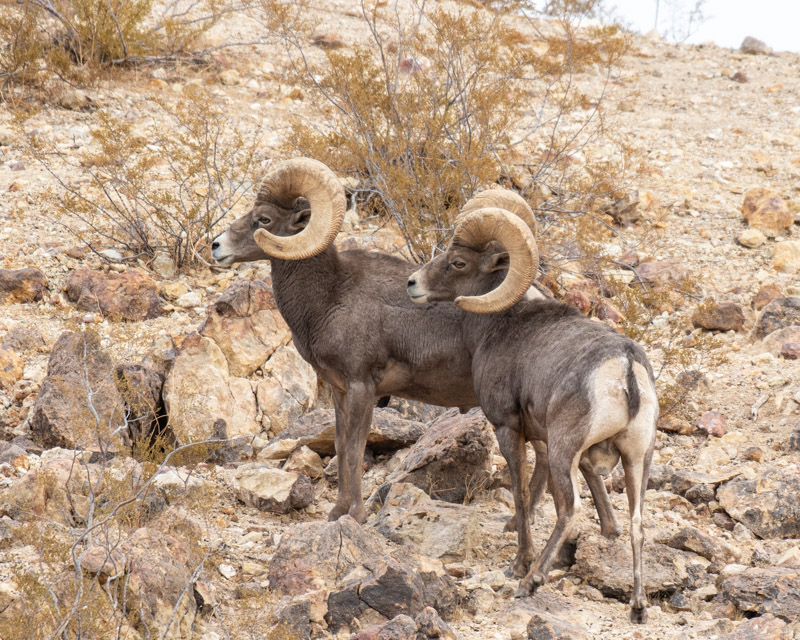
Meanwhile, another ram rested peacefully on what looks like a very rocky slope.
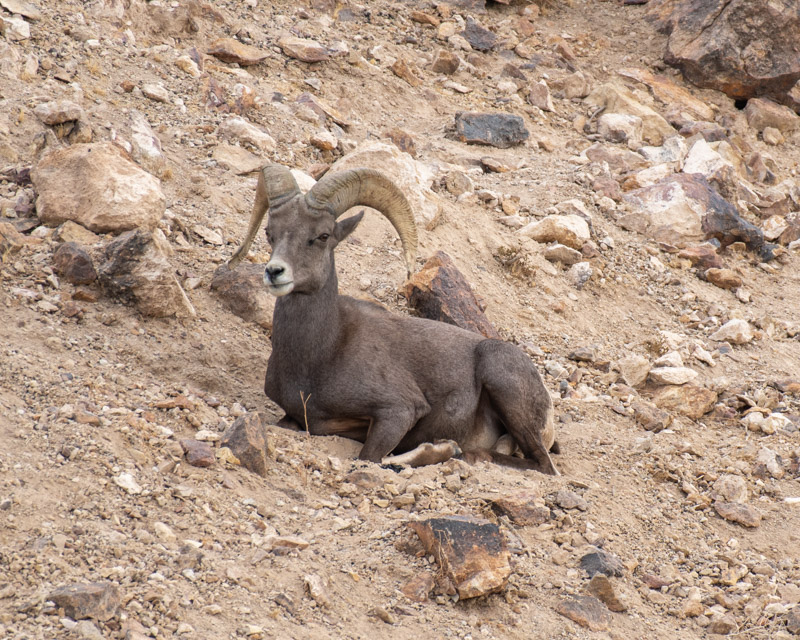
Bighorn Sheep were once one of the most widespread wildlife species in the west. By the turn of the 20th century, their numbers plummeted due to over-harvesting, habitat loss, and disease transmission from domestic animals. Conservation efforts in the West have helped to stabilize their numbers now and have enabled bighorn numbers to begin to rebound. It is nice to know that those efforts are happening in our own Foothills backyard too!
